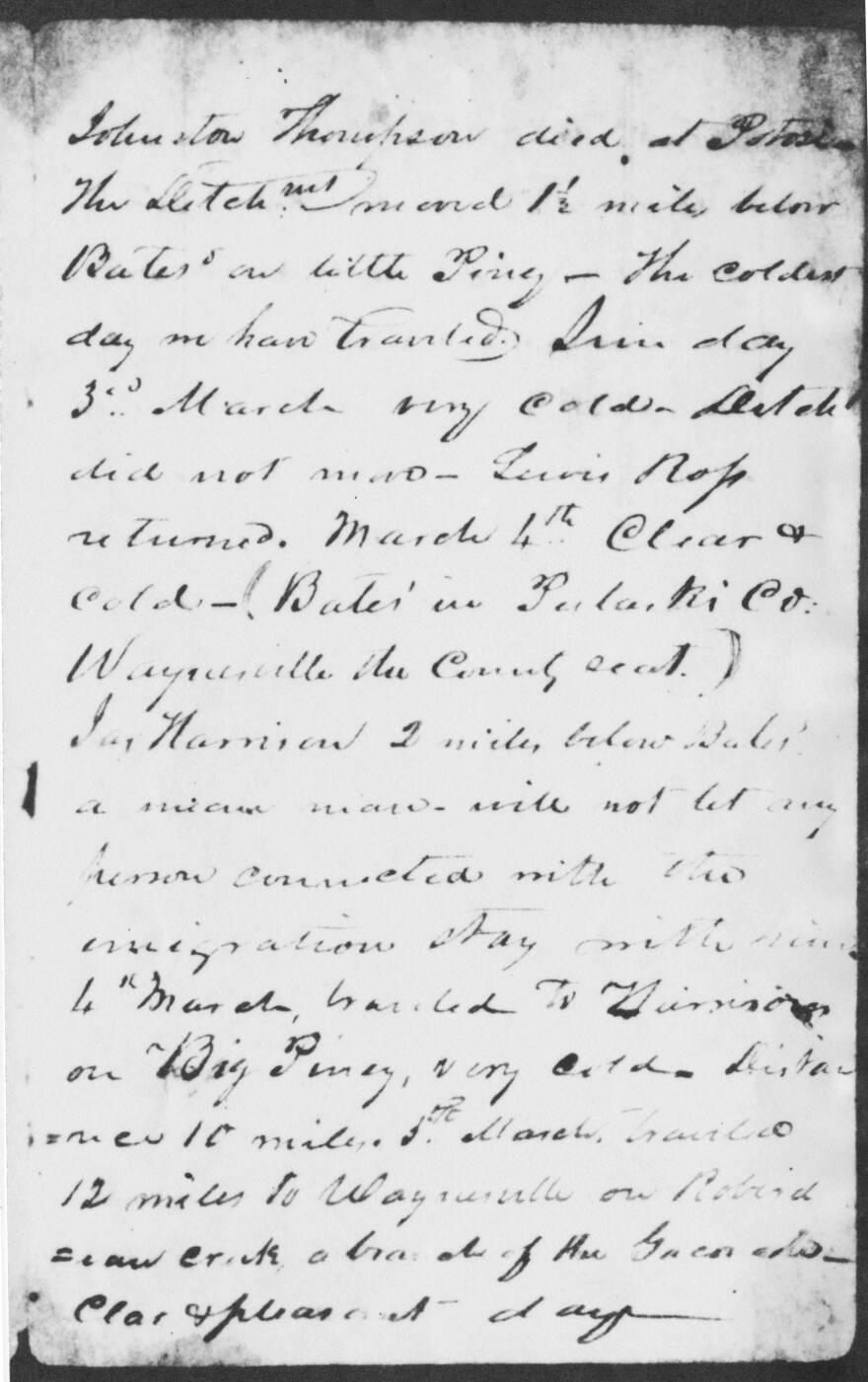Following the Indian Removal Act of 1830, Native Americans from the Southeast region of the United States began their forced migration to the government-mandated Indian Territory. On September 20, 1838, a group led by Cherokee leader Richard Taylor departed Tennessee with 1,029 people. On March 25, 1839, they arrived in present-day Oklahoma with 971 people. The Taylor party followed the Northern Route, now part of the Trail of Tears, passing through Kentucky and Illinois before traveling across Missouri. Dr. William Morrow was the attending physician for the Taylor party and recorded their daily activities. His entries include miles traveled, trail conditions, and the deaths that occurred along the route. Several Missouri cities are mentioned by Morrow including Steelville, Potosi, and Springfield.

Morrow’s journal, along with other firsthand accounts, have been used by the Steelville Trail of Tears Remembrance Committee to identify encampments and burial sites in Crawford County. With the help of the Cherokee Nation, archaeologists continue to authenticate sites like those found in Steelville.
To learn more, visit the Springfield Research Center inside MSU’s Meyer Library or find us online at SHSMO.org.



